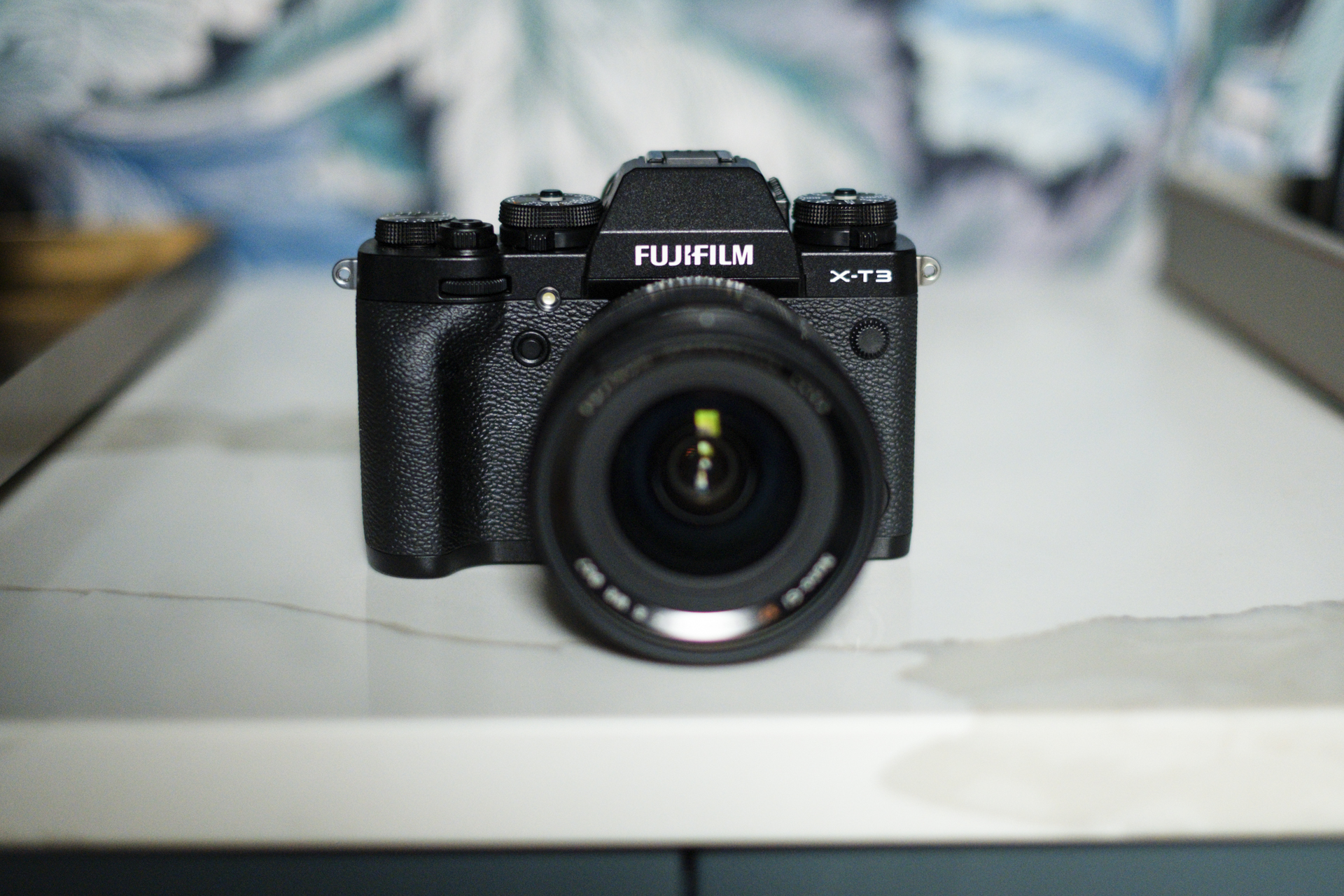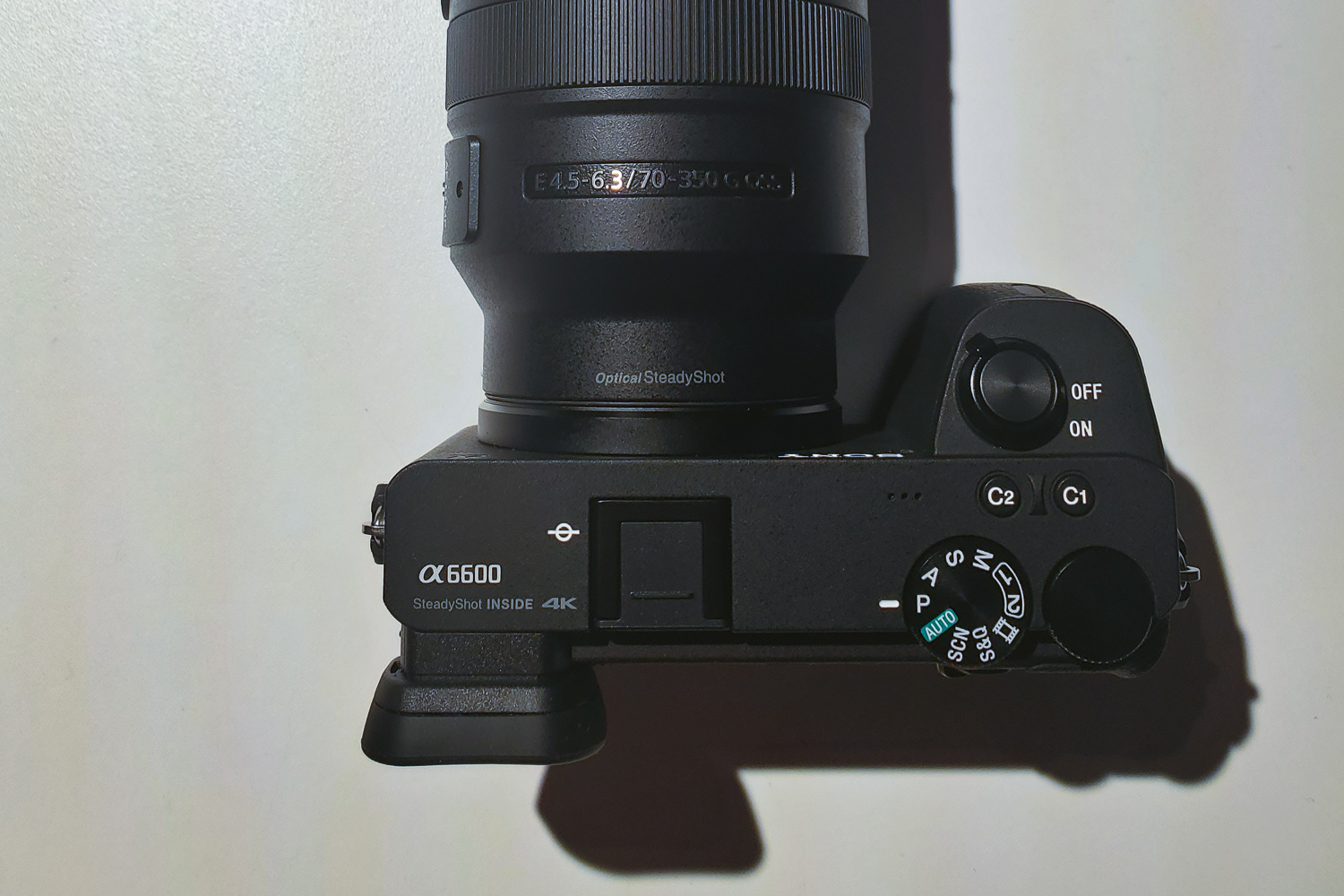The Sony A6600 and the Fujifilm X-T3 may look like completely different types of cameras, but each is a high-end mirrorless model targeting enthusiasts and professionals. The Fujifilm features one of the best-looking, best-handling designs of any modern camera, while the Sony is loaded with advanced technology. This comparison will help you decide which is approach works better for you.
Sony announced the A6600 in August 2019 and it will ship in November. It’s an upgrade to 2016’s A6500, and although not much has changed in terms of specs, there’s still enough going for this camera to get people excited. The X-T3 is Fujifilm’s flagship crop-sensor camera (a title it shares with the X-H1 and new X-Pro3). It may be a year old, but it still compares favorably to the Sony in many respects.
Sensor
Both cameras come with an APS-C sensor with a 1.5X crop factor compared to full frame. The X-T3 may be the older camera, but it actually has the newer sensor, with 26 megapixels compared to the A6600’s 24. This difference in resolution has little real-world effect and shouldn’t impact your decision.
The X-T3’s sensor is backside-illuminated, which helps it collect more light, and uses Fujifilm’s unique X-TRANS pixel array which helps control moiré without needing an anti-aliasing filter. Sony, on the other hand, has chosen to use a thin wiring layer and large photodiode substrate, which also makes it more efficient at collecting light, while sticking to the traditional Bayer pixel pattern. In practice, both sensors perform admirably.
- 1. Shot on Fujifilm X-T3
The Fujifilm has a native ISO range of 160 through 12,800. In comparison, the A6600 has a native ISO range of 100 through to 6,400. Shooting in RAW, both offer plenty of flexibility for editing and getting the look you want. Both also offer great image quality straight out of camera when shooting JPEG, something Sony has worked hard to improve in the A6600. But if we had to pick a winner, we still prefer the beautiful color reproduction of Fujifilm’s film simulations in its JPEGs.
Autofocus
For the past few years at least, Sony has pushed the boundaries of autofocus performance. The A6500 comes with 425 phase- and contrast-detection points, covering 84% of the sensor. The X-T3 uses 117 points — however, they can be further split up into 425 points and cover 90% of the sensor. Sony does have the faster AF, however, down to just 0.02 seconds in ideal conditions. No other brand on the market claims to match that.
Both systems are built with face and eye detection and produce great results for when photographing both still and moving subjects. The A6500, however, uses Sony’s latest Real-Time Tracking and Real-Time Eye AF technologies, which were built on artificial intelligence and take AF performance to the next level. Real-Time Eye AF also works on animals, making it a great option for wildlife photographers.
Both systems have quick and reliable AF, but Sony takes the win here.
Build quality and design
The X-T3 and the A6600 can both be described as compact, lightweight mirrorless cameras, but they look strikingly different. The Fujifilm X-Series has long adopted a more traditional analog feel with dedicated dials for the ISO and shutter speed. It features a large, center-mounted electronic viewfinder (EVF) giving it the look of a small SLR. The Sony is the more modern-looking camera, with fewer physical controls an EVF tucked into the left corner. Both cameras can also be controlled via their touchscreens. We love all the physical dials and buttons on the X-T3, but which is the better layout largely comes down to personal preference.
At 1 pound 3 ounces, the X-T3 is heavier, but only by a couple of ounces. It is also the larger camera at 5.2 x 3.7 x 2.3 inches, compared to 4.72 x 2.63 x 2.73 inches for the Sony. A noticeable difference in these cameras is the size of the grip. Sony has designed a large grip that stands out further from the body which isn’t pleasing on the eye, but offers a solid hand hold and houses a large battery. The X-T3 has a more subtle grip, but it’s still substantial enough to feel like the camera is secure in your hand.
We should also mention that the X-T3 has two card slots, the A6600 only has one. Whether you just want to maximize storage capacity, create redundant backups, or separate still and video files, that second card slot can come in handy.
Overall, the X-T3 feels more like a camera, whereas the A6600 feels like a fancy tech gadget. We’re giving the win to the X-T3 here.
Stabilization
There’s one glaring omission from the Fujifilm X-T3: In-body image stabilization (IBIS). Just one X-series camera has it, the X-H1, but the X-T series is apparently too small to fit in a gimbaled sensor. While some of Fujifilm’s XF-mount lenses are optically stabilized, our favorite lenses for the system are the wide-aperture primes — nearly all of which are not stabilized. This limits how slow of a shutter speed you can use without a tripod.
The Sony A6500 was the first APS-C model to include sensor-shift stabilization, a feature that has been carried forward into the A6600. It stabilizes motion on 5 axes and offers up to 5 stops of shake reduction, letting you shoot handheld at shutter speeds many times slower than otherwise possible.
Obviously, Sony takes the win here.
Video
Sony is known for video — it makes camcorders and professional cinema cameras used in Hollywood, after all — but Fujifilm took a huge leap forward with the video capabilities in the X-T3, surpassing Sony in many respects. Both cameras shoot 4K, but only the X-T3 offers both DCI (4,096 x 2,160) and UltraHD (3,840 x 2,160) resolutions (the Sony only offers UltraHD). It can also shoot 4K at 60 frames per second, where the A6600 tops out at 30.
Additionally, the X-T3 can shoot in-camera 10-bit video with 4:2:0 color at up to 400 megabits per second, or output uncompressed 10-bit 4:2:2 video over HDMI into an external recorder. Those are pro-level specifications and the image quality is impressive. Sony is limited to 8-bit video whether recording internally or externally, and tops out at a bitrate of just 100mbps. Both cameras offer logarithmic color profiles for preserving more dynamic range, but you can push the X-T3 footage further thanks to the additional bit depth.
But without IBIS, shooting video on the X-T3 all but requires a tripod, gimbal, or other stabilization system. This is where the A6600 has a real edge. The importance of IBIS should not be underestimated, and while the X-T3 may offer better quality and more framerates and resolutions that advanced videographers crave, the A6600 will be easier to use for the average person. Factor Sony’s amazing focusing system, and it just gets better.
Picking a winner here depends on how much video shoot and what you need. The X-T3 has more potential, but casual shooters will likely be happier with the A6600.
Other things to consider
Battery life: Fujifilm batteries have put a downer on an otherwise fantastic camera. With the X-T3 you can expect around 360 shots from a single charge. The A6600 knocks it out the park in comparison, from which you can expect about 830 shots from a single charge.
Shutter speed: The X-T3 has a pretty unique advantage here, albeit one most photographers don’t really need. It has a shutter speed range from 1/8,000 second all the way down to 15 minutes. You can shoot everything from sports to star trails without the need for a remote timer. The A6600 has a more traditional range of 1/4,000 to 30 seconds.
Viewfinder: The A6600 has a 2.36-million-dot resolution and a 0.7X magnification, while the X-T3 is both larger and more detailed at 3.69 million dots and 0.75X magnification.
LCD Screen: The LCD screen on the A6600 flips 180 degrees, perfect for those who are prone to taking selfies. The X-T3 LCD screen only moves to 60 degrees, but this is still useful for those who shoot from the hip or a tripod.
Both screens are touch-sensitive. However, you have more control with the X-T3, as it allows user to change focus, settings, and take a shot. The A6600 only offers the ability to change focus points when using the touch screen.
Cost: The A6600 will cost consumers $1,400 (body only). The X-T3 body can be picked up for $1,500, but being a year after its release, can often be found for less thanks to instant rebates.
Conclusion
Both of these cameras will offer photographers great results. They’re versatile, well-made, and capable of pro-level image quality. For sports and action photography, the Sony A6600 is the way to go thanks to its advanced autofocus tracking and vastly superior battery life. But for other disciplines, from landscapes and night skies to portraits and street photography, we’d still go for the Fujifilm X-T3. It’s a workhorse that will serve you well for many years to come.






